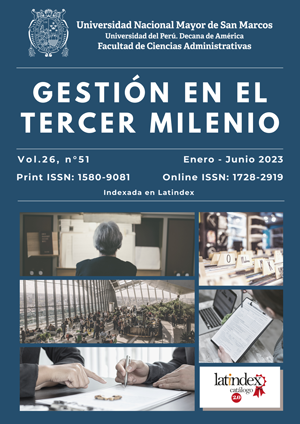Geospatial information and the intervention of the Peruvian state in areas occupied by drug traffickers
DOI:
https://doi.org/10.15381/gtm.v26i51.25530Keywords:
geospatial information, drug trafficking, budgetAbstract
This article describes and analyzes the Peruvian state's security and defense policy in relation to the expansion of the cultivation of coca, its exploitation and transportation abroad. Next, it presents quantitative budgeting data from the defense sector related to military and police operations and actions in the fight against drug trafficking and terrorism. It analyzes the work of the modern Peru SAT-1 Peruvian satellite, managed by a team of professionals from the Comisión Nacional de Investigación de Desarrollo Aeroespacial (CONIDA), which is part of the Peruvian defense sector. In relation to this commission, it presents quantitative budgeting data corresponding to the integrated and effective management of drug supply control in Peru and the improvement of military capabilities for defense and national development. The Peru SAT-1 satellite is the most modern satellite in the entire region, offering imaging services related to military operations and others of key importance to different public entities in Peru, one of which is related to the country's defense and security and the fight against illicit crops in the areas where coca plants are grown, such as the Valles de los ríos Apurímac, Ene y Mantaro (VRAEM).
Downloads
Published
Issue
Section
License
Copyright (c) 2023 Jose Antonio Villacorta Huapaya, Kennedy Narciso Gómez, Aydee Peña Zerrillo

This work is licensed under a Creative Commons Attribution 4.0 International License.
THE AUTHORS RETAIN THEIR RIGHTS:
(a) The authors retain their trademark and patent rights, and also over any process or procedure described in the article.
(b) The authors retain the right to share, copy, distribute, execute and publicly communicate the article published in Gestión en el Tercer Milenio journal (for example, place it in an institutional repository or publish it in a book), with acknowledgment of its initial publication in the Gestión en el Tercer Milenio.
(c) Authors retain the right to make a subsequent publication of their work, to use the article or any part of it (for example: a compilation of their work, lecture notes, thesis, or for a book), provided that they indicate the source. of publication (authors of the work, magazine, volume, number and date).






